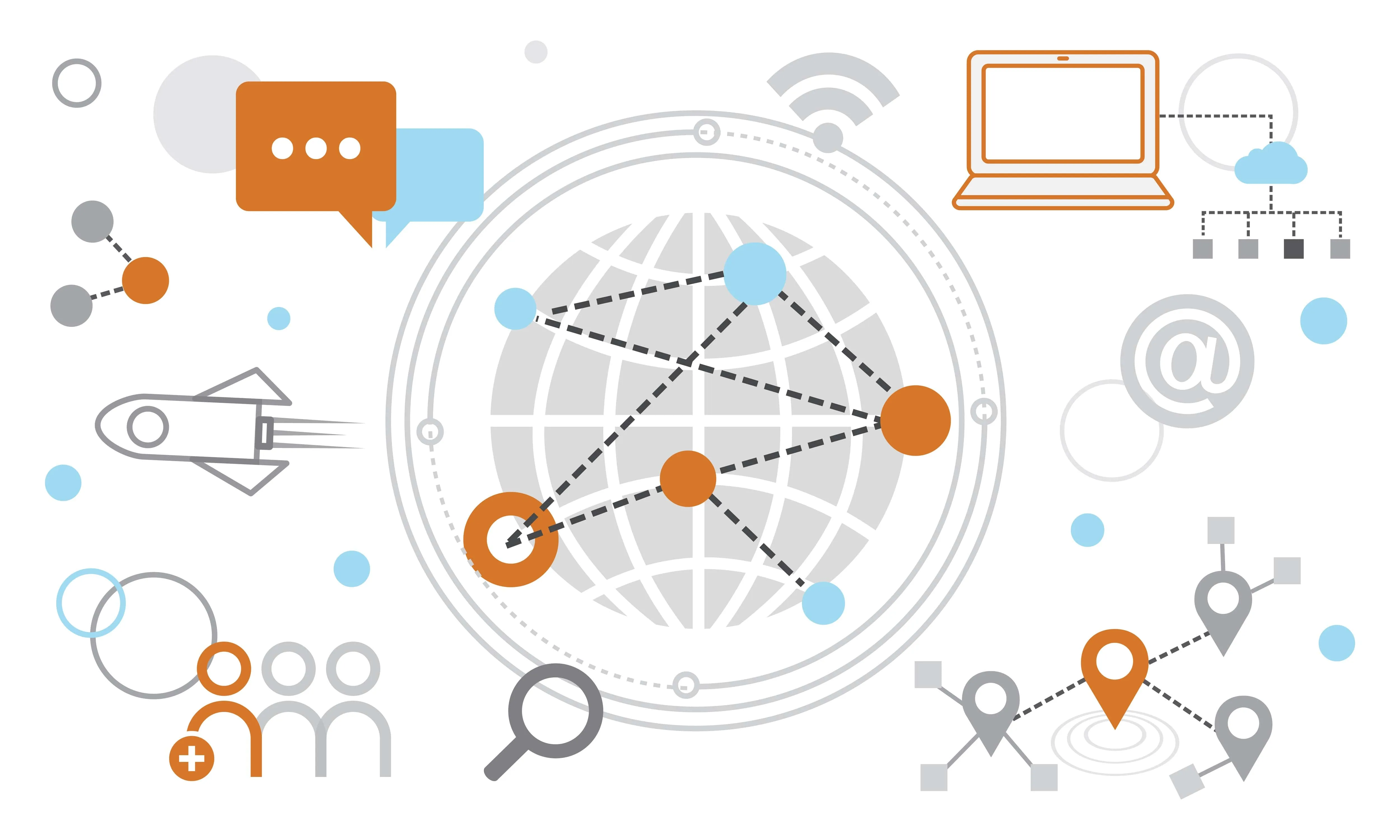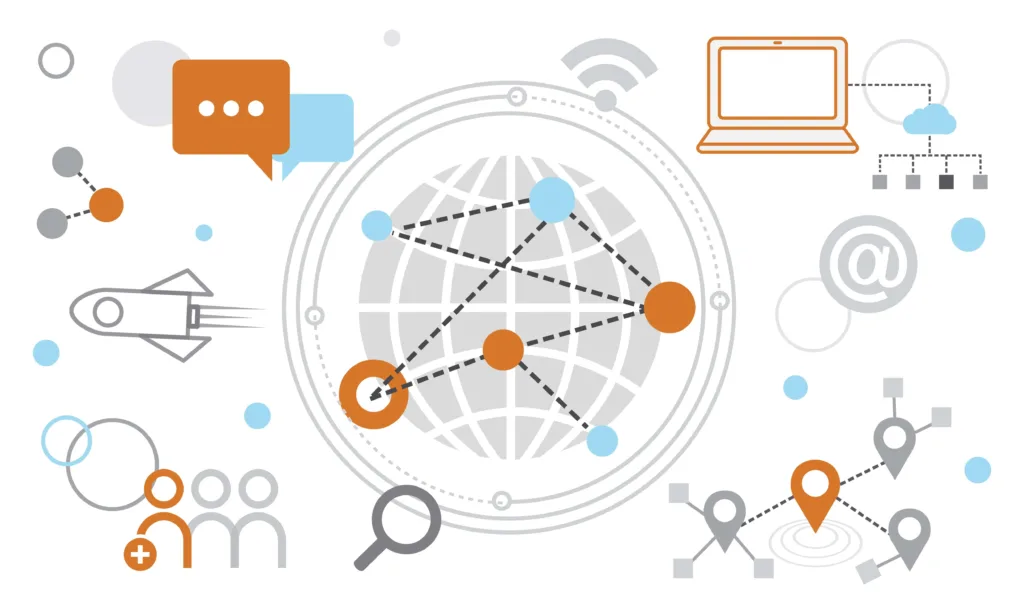- Dynamic network mapping software provides an interactive, real-time view of networks, dramatically enhancing troubleshooting and security.
- These tools are essential for handling IoT devices, cloud, and hybrid environments and enabling collaborative work across IT teams.
- Selecting the right network mapping tool involves balancing interface intuitiveness and in-depth functionality.
Network management has transformed from static diagrams to dynamic visualizations, with network mapping software leading the charge. Such tools offer a real-time understanding and interactive mapping of network topologies, responding to the need for agility in an ever-evolving digital landscape.
The Growth of Dynamic Mapping in the Digital Age
Dynamic mapping emerged as a response to the limitations posed by static network diagrams. In the past, such diagrams lagged behind the rapid developments in network infrastructures, causing discrepancies between the actual network state and its representation. Unlike these static models, dynamic mapping platforms provide an updated view, adjusting in real time as the network evolves. The growth of dynamic mapping reflects an understanding that in the digital age, where change is the only constant, network management requires agility and foresight.
These platforms do more than offer visual updates; they empower network professionals with analytics, predictive insights, and automation. Incorporating advanced technologies such as machine learning and dynamic mapping tools is redefining network management. They extract actionable insights from an ocean of data, automating routine processes and predicting potential issues before they escalate. This shift towards more intelligent networks leads the industry towards a more proactive and preemptive approach to network mapping software.
Enhancing Network Troubleshooting with Dynamic Maps
Network professionals’ ability to troubleshoot effectively is significantly bolstered by dynamic network mapping. The traditional process of diagnosing and resolving network issues was time-consuming and often reactive; teams worked with data that needed to reflect the current state of the network. Dynamic maps have turned the tables, providing real-time data visualization that translates to a faster, more efficient diagnosis and resolution process. This immediacy not only accelerates reaction times but serves to minimize the potential impact of network disruptions on business continuity.
Indeed, the enhanced productivity of IT teams armed with dynamic mapping tools is not to be understated. With an interface that visually represents changes as they happen, these teams can grasp complex network structures and their interdependencies at a glance. The advantages of this improved oversight extend into all aspects of network management but are most clearly seen when timely solutions are imperative to resolve critical network issues.
Network Security and Dynamic Mapping
The relevance of dynamic mapping extends beyond simplifying network complexities and plays a significant role in fortifying network security. Today’s networks face an array of sophisticated threats, and the ability to promptly identify and respond to these threats is critical. A dynamic map acts like a live battlefield, offering visibility into the network’s nooks and a clear view of where vulnerabilities may lie or where an intrusion might occur. Security specialists can effectively identify irregular patterns that denote security breaches by viewing real-time traffic flows.
This level of insight becomes the cornerstone of a robust network security policy. Traditional security measures must often catch up with modern networks’ dynamic and complex topologies. A step forward in this direction is to establish responsive security mechanisms that keep pace with emerging threats. Dynamic network maps are essential in this regard, facilitating a more nuanced and responsive security approach.
Dynamic Mapping for Cloud and Hybrid Environments
Organizations increasingly migrate to cloud services and hybrid environments and encounter new network management challenges. One of the most significant is maintaining visibility across a disparate set of resources, which can span multiple platforms and locales. Dynamic network mapping tools shine in these scenarios, adeptly navigating the complexities inherent in these modern infrastructures. They offer an integrated view, regardless of the diversity of the underlying technologies, ensuring a cohesive visualization of network resources.
Additionally, these tools are indispensable for strategic IT development; with the ability to update in tandem with cloud resource provisioning or de-provisioning, dynamic mapping aids in maintaining control over the IT landscape. Network managers can optimize their cloud and hybrid networks by providing insights into performance metrics and inter-service dependencies, making informed decisions that align with business objectives and future growth strategies.
The Integration of IoT Devices and Dynamic Mapping
The proliferation of IoT devices continues to expand the horizons of network infrastructure. These devices add complexity to networks, increasing the number of variables and potential points of failure. Dynamic network mapping software excels in these environments by imparting transparency into the sprawling web of IoT connectivity. With IoT devices notoriously challenging to manage due to their volume and heterogeneity, real-time mapping presents a clear picture of how these devices interact with the network and each other.
Scalability and Future-Proofing with Dynamic Network Maps
Network development is not a static affair. Growth and scalability are at the forefront of strategic planning, and dynamic maps cater to this need for expansion. They reflect current network states and anticipate future changes and adaptations. Networks evolve in response to business growth, and dynamic network maps can scale accordingly, ensuring that network administrators can plan for expansion proactively rather than reacting to the limitations of their tools.
Dynamic Maps and Incident Management
In the event of network incidents, dynamic maps prove their worth again, becoming essential to incident management practices. The ability to dynamically track and visualize network health and anomalies enables IT professionals to pinpoint the source of the issue quickly. Moreover, mapping can overlay historical data onto current states, allowing for a comparative analysis that can swiftly resolve incidents.
Collaboration and Shared Insights Through Dynamic Network Mapping
Effective network management is often a collaborative effort. Dynamic maps facilitate a shared and simultaneous view of the network, allowing insights to be gathered and understood collectively. This team-oriented approach is increasingly important as networks become more complex, requiring expertise from various domains. Technical teams can use these visual tools to communicate clearly, fostering a united and informed response to network changes and challenges.
Choosing the Right Network Mapping Tool for Your Organization
Selecting the ideal network mapping tool hinges on various factors, including your organization’s network’s specific needs and scale. The tool’s interface must be intuitive, allowing users to harness its functionalities effectively without a steep learning curve. However, the tool’s power lies in its functionality; the ideal solution balances ease of use with a rich set of features capable of detailed network analysis and visualization.
Undertaking a cost-benefit analysis is a crucial step in this decision-making process. The return on investment for implementing dynamic network mapping software must be assessed against the potential productivity, security, and strategic insights gains. The right tool mitigates risks and serves as a catalyst for growth and innovation within the network management arena.
In summarizing the core benefits of dynamic network mapping, it is imperative to recognize its transformative impact on network administration. This technology encourages a shift towards proactive network management, streamlining complex systems into understandable visuals that drive informed decision-making. By embracing dynamic visualization, organizations position themselves at the vanguard of a digital-first future, ready to manage their networks with unparalleled proficiency and foresight.
Do you have other ideas about The Development of Network Mapping: 9 Steps How Dynamic Visualization is Changing the Game article? You can comment below or discuss more related to “The Development of Network Mapping: 9 Steps How Dynamic Visualization is Changing the Game” in the CnwinTech Forum. Also, read more articles about Insurance Tech, Insurance Business Investment, or other exciting tech tips and tricks at CnwinTech.
Want a capable desktop PC at an affordable price for multitasking, playing games, and working? Check out and visit our store below!












